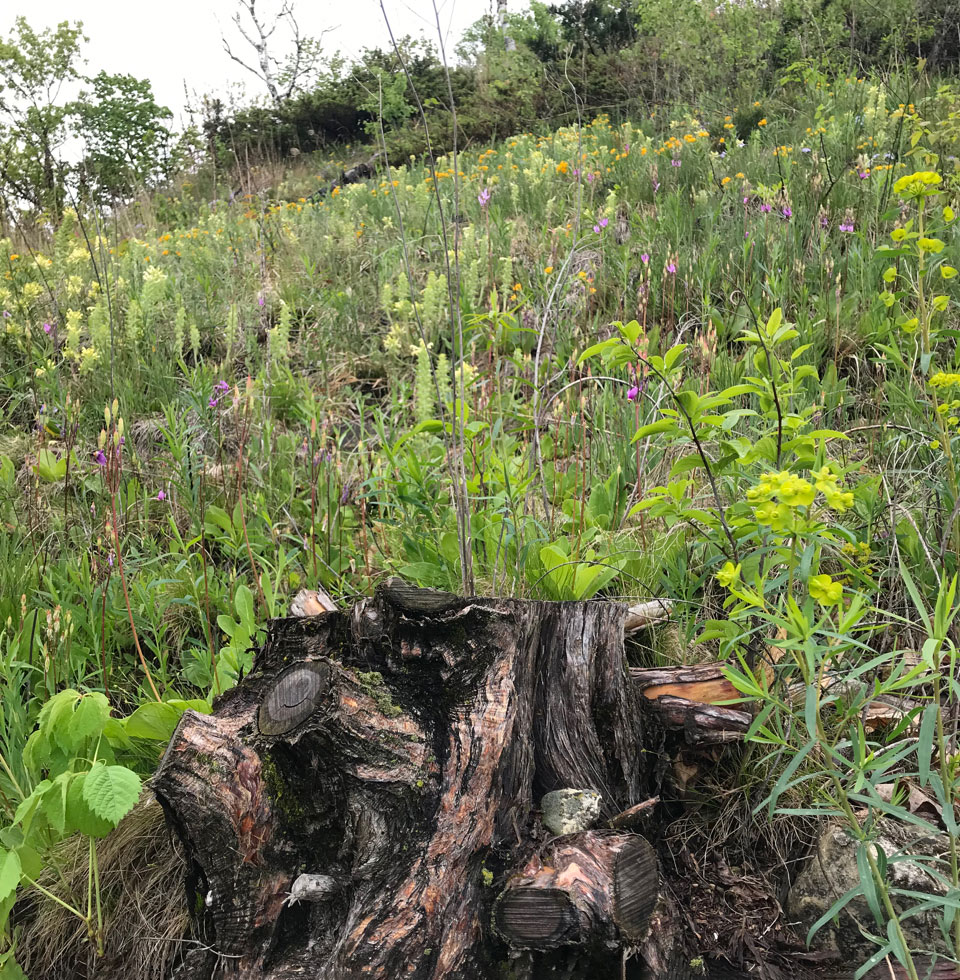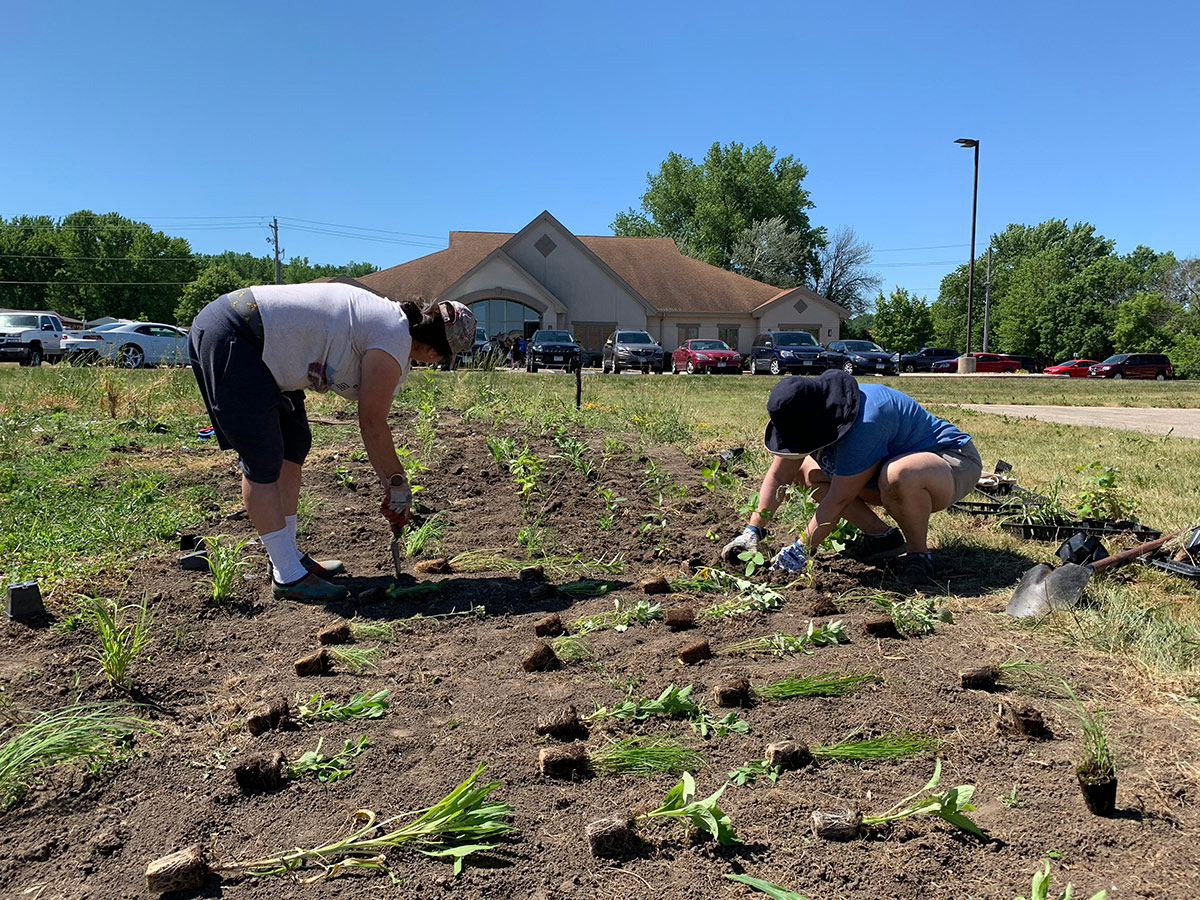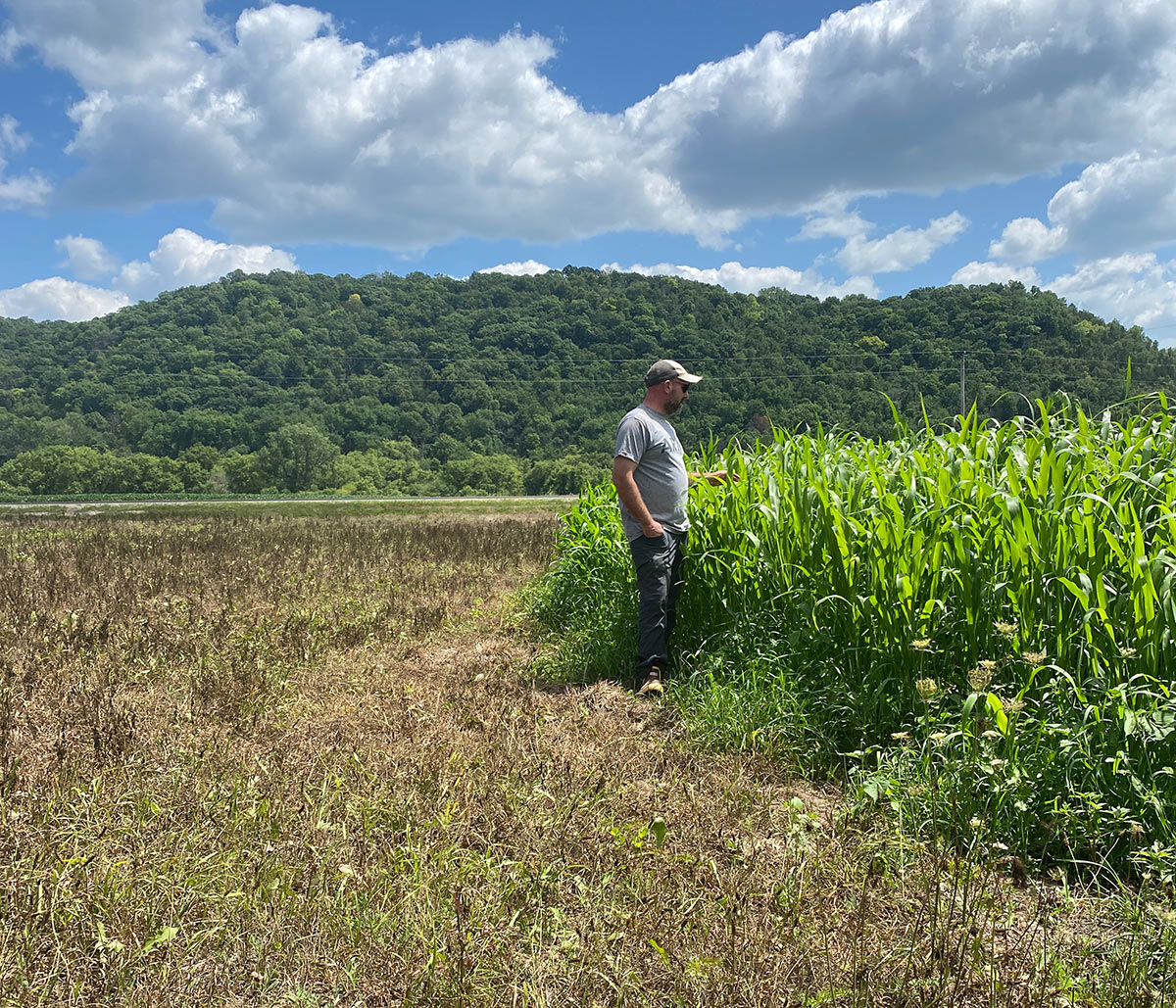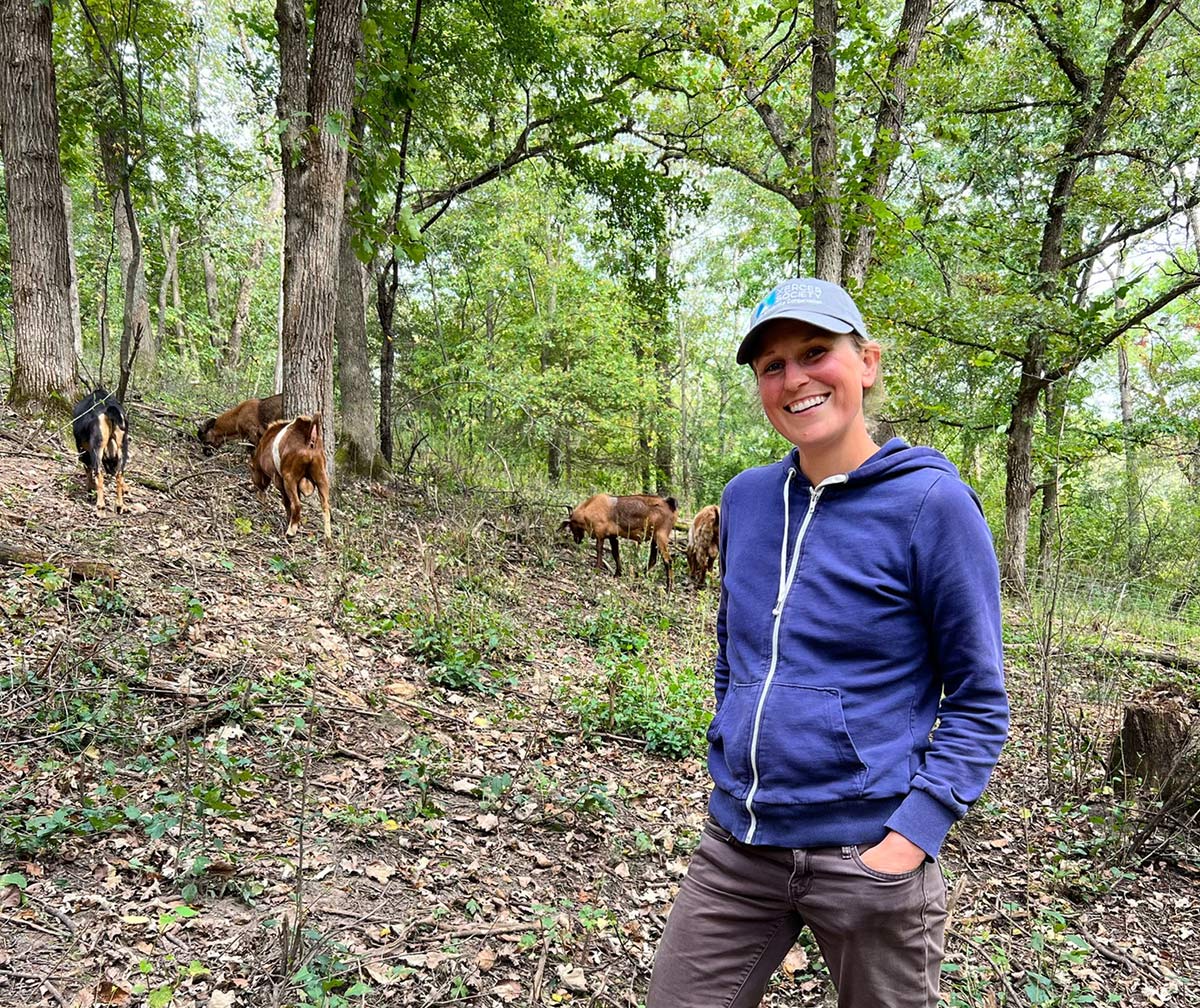Let us introduce you to a magical corner of the world called the Driftless Area: a subregion of the Upper Mississippi River Valley that includes portions of Minnesota, Wisconsin, Iowa, and Illinois. Millions of years ago, the Midwest was covered in glaciers, and as they receded, they flattened the landscape and left behind a gravel-soil mix known as glacial drift. The Drift-less Area was missed during this process and takes its name from the absence of these deposits. Instead, the area is characterized by steep sandstone and limestone slopes that tower above coldwater streams and narrow river valleys.
This rugged terrain – covered in hardwood forests, oak savannas, prairies, and wetlands – provides unique habitat for wildlife of all kinds, including many imperiled invertebrates. In modern times, row-crop agriculture has replaced this habitat on the blufftops and the valley floors, and the remaining natural areas are often degraded by invasive species, fire suppression, pesticide drift, and other threats. These threats, combined with the Driftless region’s unique and vulnerable flora and fauna, make it a place in the Corn Belt with especially high conservation value. It is also an ideal landscape to showcase nature-based solutions that address the intrinsically linked climate crisis and biodiversity crisis.
In light of this, we are thrilled to be working with farmers and other partners across the region on a variety of high-quality habitat projects. For example, with funding from the Wildlife Conservation Society (WCS) Climate Adaptation Fund, we recently partnered with Practical Farmers of Iowa (PFI), US Fish & Wildlife Service (USFWS), and many farmers and land managers to create or enhance over 300 acres of climate-ready pollinator habitat throughout the Driftless Area. A fundamental priority for all of these projects is the restoration of diverse native plant communities that provide nesting and foraging habitat for specialist and generalist pollinators, as well as myriad other benefits including soil protection, carbon storage, water quality improvement, and drought resilience.


Landowners view habitat regeneration as an act of mutual care
The habitat projects that we developed under this grant were as diverse as the Driftless landscape itself, but one commonality across all projects was our partnership with people who love the land and feel a profound responsibility to do right by it. Many of them have already experienced severe impacts of climate change, and have come to realize that biodiversity conservation offers a strategic path towards a more resilient future. These people may not be professional naturalists or ecologists, but they are attentive listeners and observers of the community dynamics on their lands. They understand that caring for the diversity of life on their land will generate what indigenous leader Robin Wall Kimmerer describes as “mutual flourishing” – fulfillment and abundance in all of our lives.
Carrie Calvo, of Owl Bluff Farm near Houston, MN says, “For our small business, there is not a more important partner than the pollinators that inhabit our land.”
Craig David, a farmer near Zumbro Falls, MN shares similar sentiments. When discussing the 26 acres of prairie we were planting on his farm, he said, “It's funny, I get the same feeling planting a tree or creating a work of art, large or small. When I put a tree in the ground, I speak to it tenderly, reminding it that this is its big chance, and its time to flourish. The act of living, planting, creating a family, or making art is sacred. We are all in the same place...that of trying to hang onto our beautiful planet and its creatures and flora. We are the lucky ones.”

At Owl Bluff Farm, we planted 3.5 acres of diverse prairie with a combination of WCS funding and an EQIP pollinator habitat contract with the Natural Resources Conservation Service (NRCS). On this site, we compared two different site prep methods: the more mainstream approach of using herbicides, and an organic method involving the use of sorghum sudan grass to smother out weeds. Our seed mix was very diverse (approximately 100 species) and we seeded at a high rate to help ensure quick establishment and long-term climate resilience. (Photo: Carrie Calvo / Owl Bluff Farm.)
Peer learning lights the conservation spark between neighbors
In general, when planting habitat, we try to prioritize projects that can serve as demonstration sites for other farmers and community members to learn from via ongoing field days at all stages of the restoration process, including the not-so-pretty stages in the early years of establishment. Peer learning is consistently one of the best models for inspiring conservation action, and our farmers do a phenomenal job of partnering with us on outreach that motivates and strengthens support for pollinator conservation and helps other farmers clearly understand how to go about the process.
Although our WCS grant recently came to a close, we have no doubt that the restoration projects we started will continue to blossom in the coming years and inspire additional habitat restoration in their local communities. Dayna Burtness Nguyen of Nettle Valley Farm has indicated that she would like to host a field day every year to share the joy and lessons gained from integrating native pollinator habitat and savanna restoration into her grazing enterprises. Susan Grelling, of Reads Landing, is beyond eager to bring local youth groups onto her bluff prairie restoration to train young people about prescribed fire, wild and managed bees, and land stewardship. The city of La Crescent is anxious to build interpretive trails through part of the wet prairie we planted for ongoing public education about the value of native habitat. Similarly, our partners at Dodge County have impressive plans for place-based education programs for nearby schools, including trips to the 10.5 acres of prairie we planted together under this grant.
The work of stewarding land for pollinators and people is a never-ending project, but collaborations that combine Xerces’ technical expertise with visionary and enthusiastic producers feel like a solid recipe for landscape revitalization.





